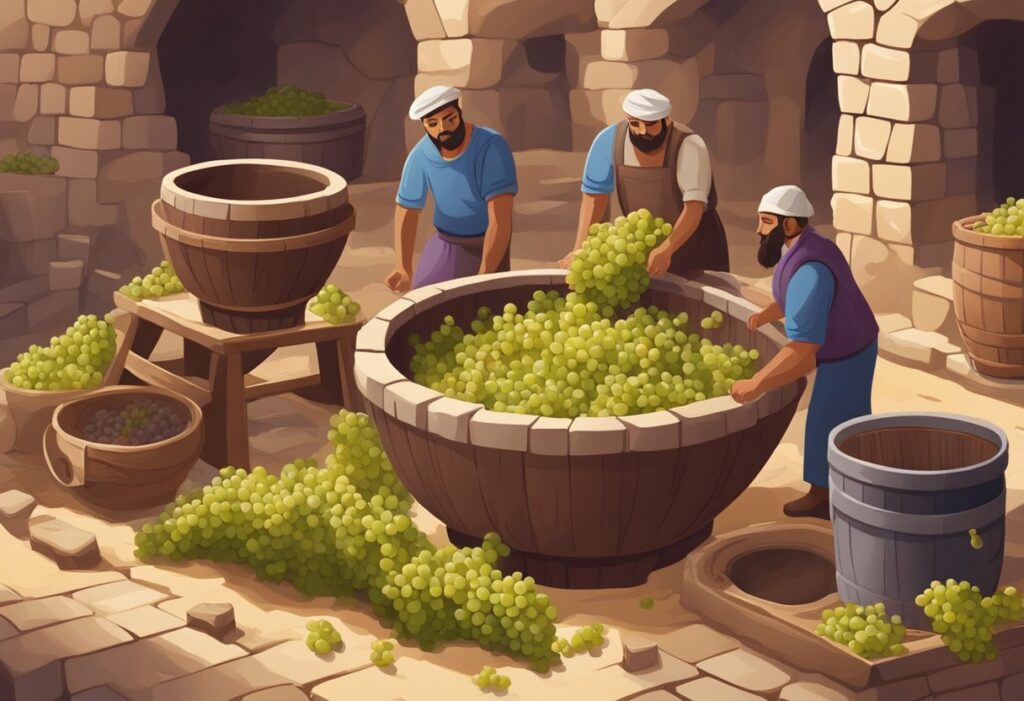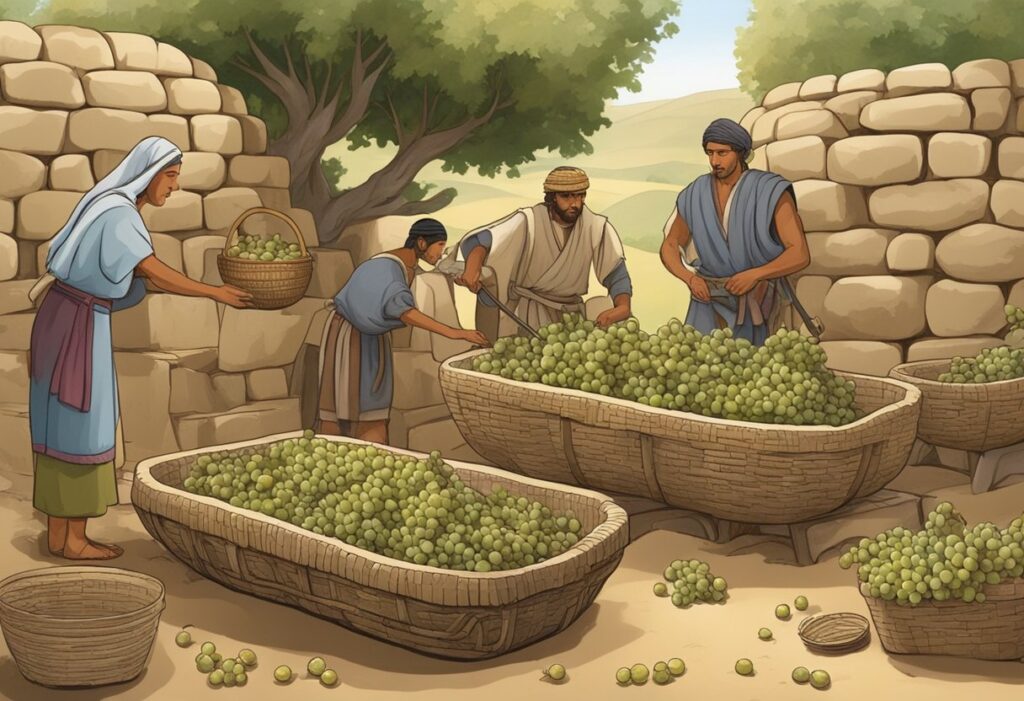Wine has been deeply woven into the fabric of ancient cultures, playing a significant role in religious, social, and economic spheres. From the earliest days of human history, wine has been more than just a beverage; it has symbolized sanctity and celebration in various religious ceremonies. This critical connection to spiritual observances made it a common element in rituals across different civilizations.
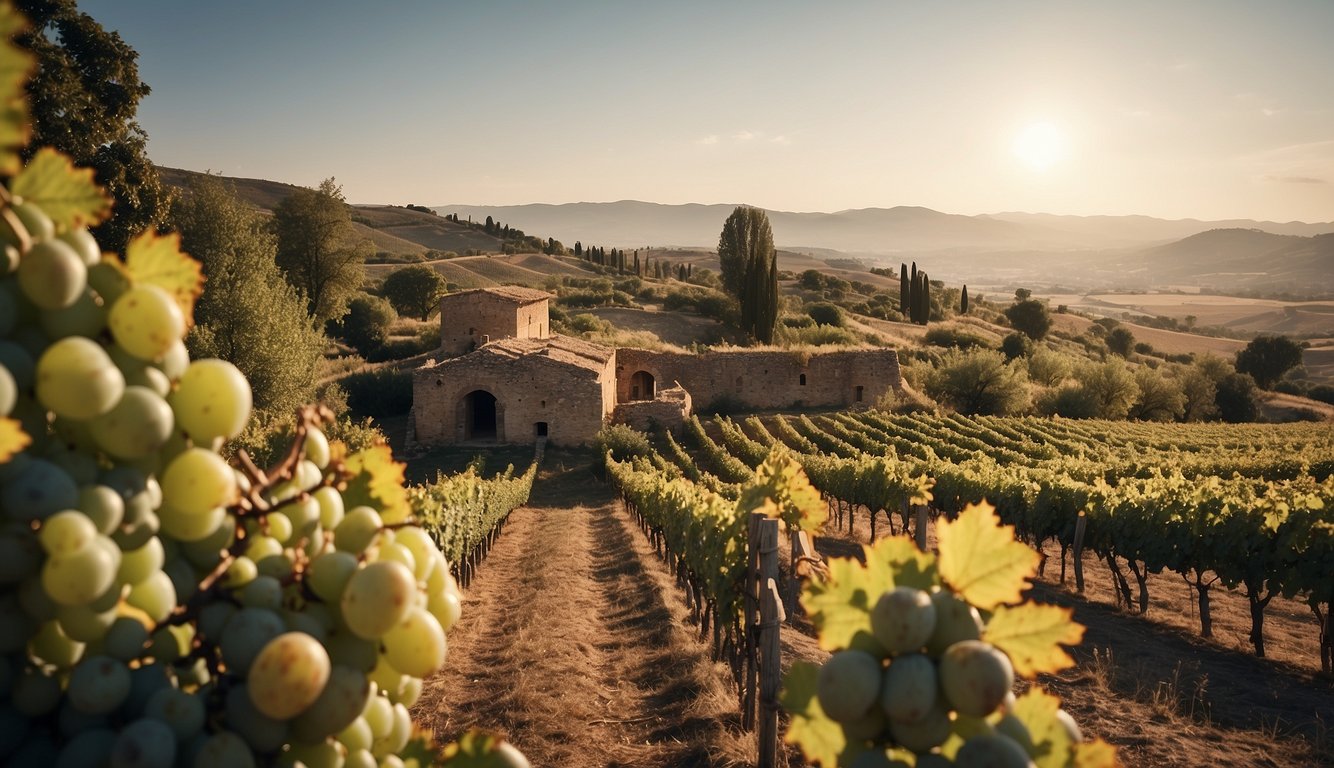
In social settings, wine was often at the center of gatherings and feasts. The Greeks, for instance, institutionalized wine-drinking in their famous symposia, where philosophical discussions and entertainment went hand in hand. Similarly, the Romans enhanced winemaking techniques and brought wine to a broader audience through their expansive trade networks, highlighting its importance in everyday life and community bonding.
Economically, wine production and trade were crucial in ancient times. Civilizations like the Byzantines and Nabataeans developed advanced technologies such as wine presses and trade routes to manage this valuable commodity. The wine trade facilitated the exchange of goods, ideas, and culture across regions, making it a cornerstone of ancient economies and cultural development. Explore how these layers of wine’s significance shaped the ancient world and its enduring legacy.
Wine in the Fabric of Ancient Societies
In ancient societies, wine played a critical role not only as a daily indulgence but also through its integration into social rituals, religious ceremonies, and economic activities. These aspects underscored wine’s broad influence across different cultures.
Cultural Significance Across Civilizations
Wine had a notable impact on the social and cultural fabric of many civilizations. In ancient Greece, wine was a central part of everyday life and communal gatherings, such as symposia where philosophical discussions and entertainment took place.
The Romans also cherished wine and were known for their elaborate feasts and banquets where this beverage was a symbol of social status. Wine production and trade were significant economic activities, as depicted by amphorae found in Roman ruins near Naples, Italy.
In ancient Egypt, wine was intertwined with religious practices. It was offered to gods and pharaohs and featured in ceremonial occasions. The frescoes in Egyptian tombs depict grape harvesting and wine-making, illustrating its importance in life and the afterlife.
Symbolism and Mythology
Wine’s influence extended into mythology and religious symbolism. In Greek mythology, the god Dionysus represented wine, pleasure, and festivity. His Roman counterpart, Bacchus, symbolized similar attributes. These gods were celebrated in various festivals that highlighted the indulgent and divine nature of wine.
Wine is also significant in religious texts like the Bible, where it is both a symbol of divine blessing and human celebration. In Judaism, wine is essential in rituals and ceremonies, such as the Sabbath and Passover. Christianity holds wine in high regard, especially in the context of the Eucharist, symbolizing the blood of Christ.
In these ways, wine bridged the gap between the mortal and the divine, transcending mere consumption to become a deeper symbol of spirituality and culture.
Religious Rites and Rituals
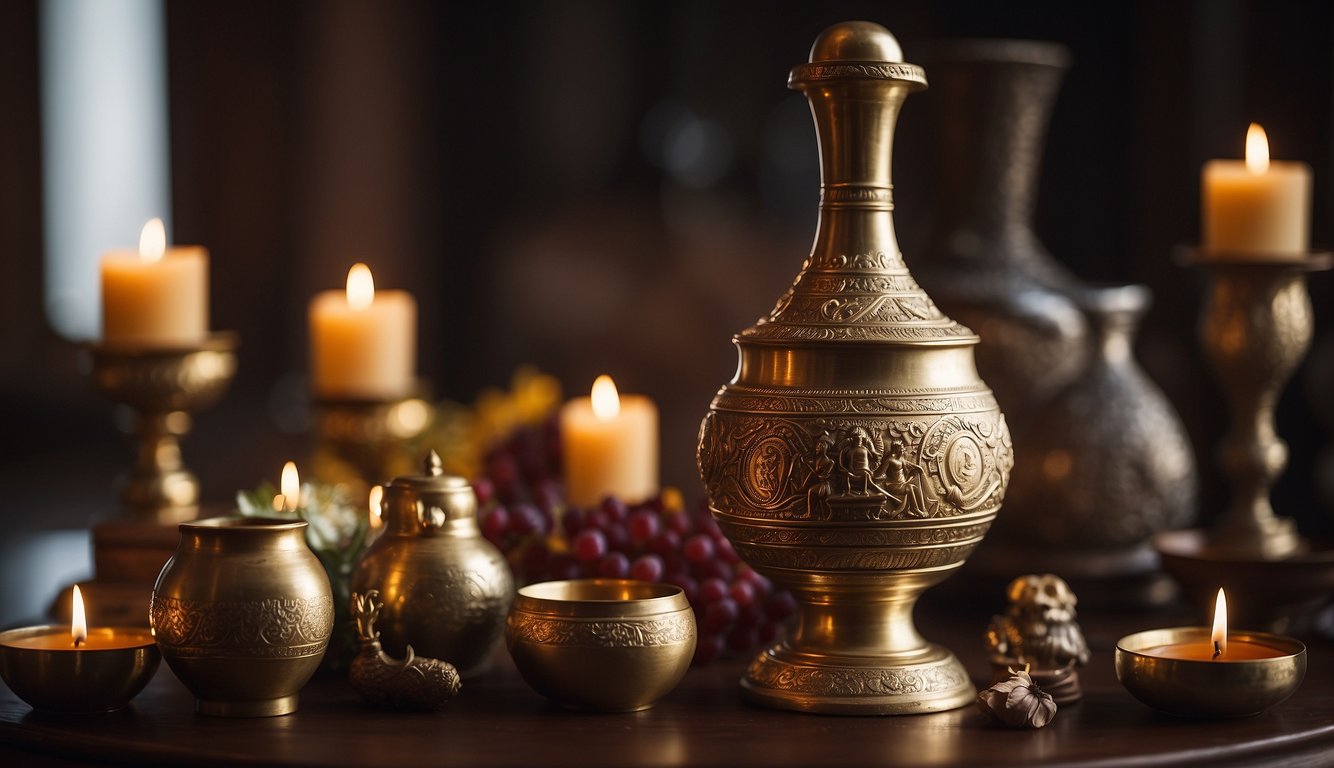
Wine has deep roots in religious traditions, playing crucial roles in both pagan and monotheistic ceremonies. Its symbolic transformation highlights its importance in various faiths.
Wine in Pagan and Monotheistic Rituals
In ancient cultures, wine was integral to religious rituals. For the Greeks, it was associated with Dionysus, the god of wine, symbolizing joy and divine presence. During festivals honoring Dionysus, followers drank wine as a form of worship.
In contrast, wine holds a sacred place in monotheistic religions too. In Christianity, wine is central to the Eucharist. During Mass, it represents the blood of Jesus Christ, commemorating the Last Supper.
In Judaism, wine is used during the Sabbath and Passover. It symbolizes joy and thankfulness to God. By incorporating wine, these events become more meaningful and spiritually significant.
Transformation of Wine in Religious Traditions
Wine’s transformation in religious traditions reflects its symbolic importance. In Christianity, the Bible mentions Jesus turning water into wine at the wedding in Cana, highlighting miracles and divine power. This event underscores wine’s sacred nature.
During the Eucharist, the transformation of wine is significant. Christians believe that during Communion, the wine transforms into the blood of Christ. This act of drinking wine spiritually connects believers with their faith.
In ancient Egyptian rituals, wine served as an offering to gods. It symbolized life and rejuvenation, making it a crucial part of religious ceremonies. Wine’s transformation across different cultures illustrates its multi-faceted significance, enhancing the spiritual experience for followers.
Viticulture and Winemaking Techniques
In this section, you’ll explore the ancient methods and innovations in viticulture and winemaking that shaped early wine traditions. This includes techniques for cultivating grapevines and the processes used to turn grapes into wine.
Ancient Practice of Wine Production
Ancient cultures developed many winemaking techniques to produce wine. The Sumerians and Babylonians began by harvesting grapes and crushing them with their feet. They used large clay vessels known as amphorae for fermentation. These amphorae were sealed with clay or pitch to protect the wine from air and contaminants.
Greek and Roman civilizations played a significant role in spreading these techniques. They refined the process by introducing tools like the wine press, which made grape pressing more efficient. Romans further enhanced winemaking by understanding the importance of terroir, climate, and soil. This helped them choose the best locations for grapevines, ensuring high-quality wine production.
Innovation and the Spread of Wine Technology
Innovation was key to the spread of wine technology. As vine cultivation spread from the Near East to Europe, new techniques were developed. The introduction of varietal selection and vegetative propagation allowed for more consistent grape production. This ensured that desirable traits in grapevines were maintained across generations.
The spread of wine culture can also be attributed to advancements in pottery. New designs in amphorae and other storage vessels improved wine transportation and storage, ensuring wine could reach distant markets in good condition. These innovations also helped maintain the wine’s quality during long journeys.
Research and discoveries in areas like archaeochemistry have shed light on these practices, proving how ancient winemaking techniques have influenced modern methods. For instance, recent studies of ancient wineries, such as those excavated in the South Caucasus, reveal that winemaking emerged as early as the Neolithic period, demonstrating the long-standing significance of wine in human culture. These insights into ancient viticulture and winemaking highlight how these early innovations laid the foundation for the wines enjoyed today.
The Economics of Wine

Wine played a crucial role in the economies of ancient cultures, affecting trade, demand, wealth, regulations, and reputation. Its significance is visible in various aspects of life across different civilizations.
Trade, Demand, and Wealth
Wine was a major commodity in ancient trade. The Phoenicians were particularly influential in spreading viticulture throughout the Mediterranean. Their trade routes extended from the Black Sea to Spain, creating a vast network for wine distribution. Wine’s demand was driven by its use in religious ceremonies, social gatherings, and daily consumption.
Regions like Campania in Italy and Gaul (modern-day France) became renowned for their wine production. This demand led to high profit margins for producers and traders, contributing significantly to their wealth. The economic landscape of areas involved in the wine trade transformed as wealth accumulated from this valuable liquid.
Roman viticulture further enhanced the scale and complexity of wine economics. Romans improved techniques, enabling large-scale production. Their influence stretched across the empire, including Gaul and Spain, ensuring that wine remained a cornerstone of ancient commerce.
Regulations and Reputation
Regulations were essential in maintaining the quality and reputation of wine. Roman laws outlined specific rules for production and distribution to ensure consistency and authenticity. These regulations helped protect the reputation of regions known for their high-quality wine, like Campania.
You would see ancient labels, akin to today’s appellations, marking wines from prestigious areas. This practice was vital for building and maintaining a brand’s status. Regulations prevented dilution and ensured fair trade practices.
Maintaining a good reputation was crucial for economic success. Merchants and producers who adhered to high standards saw increased demand for their products. This respect for quality fostered trust, ensuring long-term economic stability and prosperity for those involved in the wine trade.
Social Aspects and Daily Life
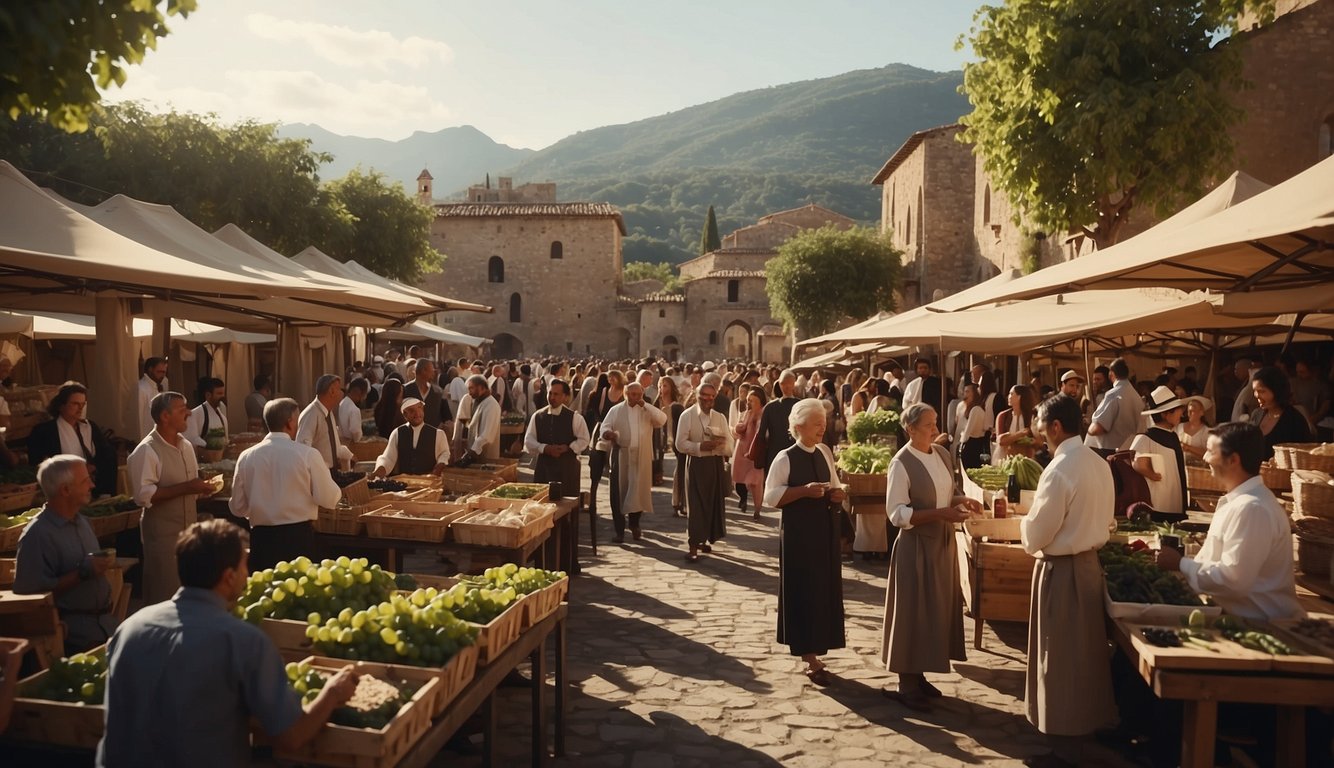
In ancient cultures, wine played a significant role in not just religious ceremonies but in the daily life and social interactions of communities. The use of wine ranged from grand celebrations to daily meals, highlighting class distinctions and multifunctional importance.
Wine in Everyday Living and Festivities
Wine was a common sight in the daily lives of many ancient communities. It wasn’t just reserved for special occasions but was a staple in everyday meals. In the ancient Mediterranean, wine was often consumed by all members of society. It was believed to have numerous health benefits, such as aiding digestion and purification.
Festivals and banquets held across various civilizations also featured wine prominently. In ancient Greece, for example, wine was central to symposia—gatherings where philosophers, poets, and politicians would drink and engage in intellectual discussions. You can learn more about this tradition here.
In many ancient cultures, festivals celebrated deities associated with wine, like Dionysus in Greece and Bacchus in Rome. These events, known as Bacchanalia, were notable for their lively and often rowdy celebrations. The social aspect of consuming wine brought communities together, making it a vital part of society.
Class Distinctions and Wine Consumption
While wine was widely consumed, its production and types often reflected class distinctions. The quality and quantity of wine available varied significantly between the rich and the poor. Wealthier citizens had access to aged wines and imported varieties that were stored in elaborate containers such as amphorae.
In contrast, the lower classes typically drank more basic, locally produced wines. The way wine was consumed also highlighted social hierarchies. At elite banquets, protocols dictated the order of serving and even the types of wine provided.
In ancient Greece and Rome, the elite hosted symposia where the quality and variety of wine showcased their wealth and status. These gatherings were not only social events but also opportunities to demonstrate power and influence within the community. The impact of wine on societal dynamics was profound, clearly demarcating social and economic boundaries. Explore more about its role in ancient cultures.
